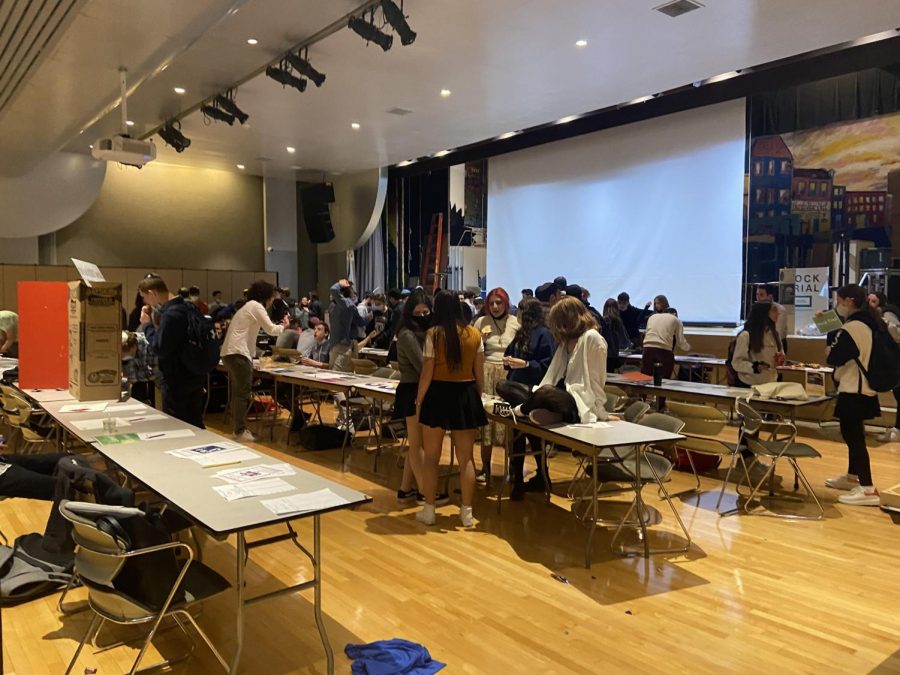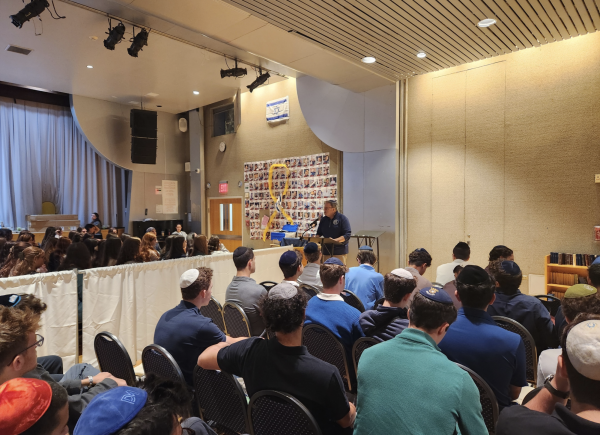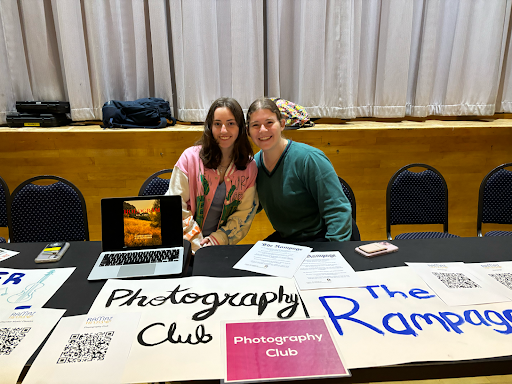Club Fair: Organized Chaos
Every year, Ramaz holds Club Fair to present all its clubs to freshmen and to any students who want to expand their co-curricular experience. Teachers and students spoke about their experiences with the return to a live club fair.
Mr. Deutsch is a faculty advisor for four clubs. Depending on the club, he likes to stay very involved in club meetings but tries to push the student leaders to be more active. Due to Club Fair being right after chag this year, Mr. Deutsch frantically sent out emails the night before to make sure people would be representing his clubs to the new students. Mr. Deutsch acknowledged that the real way he gets the word out about his club meetings or the details of his club is by posting on Schoology, and once students join, he makes Schoology groups to make sure involved students see all the details needed. At Club Fair, he likes for each of his clubs to have a poster with a description and for people to only sign up if they’re actually interested. Ideally, there would be more descriptive paraphernalia and more visuals for each student to get a more accurate feel of the club. Thinking back to last year, when Club Fair was online and each club had a five-minute slot to present on Zoom, although it might’ve been efficient, the presentations were missing the social aspect. Being online loses the informality of the event and discourages questions to club leaders. The students who are most interested in these clubs will ask questions at Club Fair, but being isolated on Zoom and all eyes on one person is a lot of pressure for something as informal as Club Fair normally is.
Ms. Brachot is also a faculty advisor for a few clubs. She is involved in Breakthrough, the science publication, leadership in STEM, and will be helping Dr. Rotenberg oversee robotics this year. She agrees with Mr. Deutsch in that the amount of her involvement mostly depends on how much work students leaders and even club members are putting in. For publications, if student leaders aren’t working fast enough to get out the publication, then she has to intervene to make sure they make a deadline. She contacts her club members through email. Depending on whether the club is like a publication, where only students who are more consistent writers are on the email list, or it’s a club that meets less often, she thinks emailing smaller groups of kids is more effective. Before Club Fair, she’ll have some time to prep her student leaders for how to address students interested in the clubs. This year she just checked in with student leaders in the morning to make sure someone would be at the stand. She agrees that Club Fair isn’t really about publicizing clubs and that every club makes an appearance on Schoology at least at the beginning of the year for people to hear what it’s about. She also thinks that a reason why club fair is inefficient is because of how crowded and loud the room is when everyone is trying to hear information- she didn’t even go this year! Although she does agree that a Zoom option may be more effective, she thinks that it’s much more helpful to talk with someone one-on-one about all your concerns before joining a club, and it’s easiest to do that in person.
Samara Blatt ’22 is a student leader of two clubs and a founder of one. She was able to organize shifts with other club leaders to make sure that there was always someone at the stands. But she does agree that Club Fair is more of a social event to see friends and to see new captains of each club, but she does think it’s really important to get a “vibe” of the club and of the students involved, especially since joining a club isn’t just about what the club does, but it’s about meeting new people. Samara believes that subjecting each club to only five minutes on a Zoom would be really robotic and defeat the aspect of Club Fair where a person can understand the types of kids who sign up for these clubs. Also, not many people would go to Club Fair after freshman year if it’s just on Zoom, especially if it’s outside of school hours. She doesn’t even remember going to Club Fair last year because she probably felt it wasn’t necessary.
Ron Alweiss ’22 is involved in eleven different clubs, including Choir, Chamber Choir, Model UN, Volleyball, Engineering, Music Production and Songwriting, Guitar Ensemble, and he is the Media Editor of Parallax. As he is involved in the leadership teams of eight different clubs, he did not have enough time to be at every stand, but worked on delegating his clubs to different leaders he works with. He knows that he is the only leader of Music Production and Songwriting, so he had to take care of that and he delegated other clubs to other leaders. He agrees with Samara that although Club Fair isn’t very efficient as is, we shouldn’t move to Zoom because we’d lose the personal touch of Club Fair, along with meeting captains and getting a feel for club members.
Sarah Kalimi ’25 and Yaakov Rabiei ’25 are both Freshmen who attended Club Fair this year. They each signed up for around ten clubs. Most clubs they joined because they knew a bit about what they were but also because people were screaming at them to sign up, meaning that even though some of their choices had valid reasoning behind them, they were also persuaded to join clubs with no information and will probably never attend a club meeting. However, they tried to make sure they didn’t sign up for clubs they knew for sure they didn’t want to be a part of. They also only based whether or not they signed up solely on the name of the club, considering most clubs didn’t have any descriptions near their stands. They tried asking the leaders at the stand, but if there was no one there to represent, they just wouldn’t sign up. But they find comfort in knowing that even if they didn’t see a club at Club Fair, they are seeing all the same clubs they saw plus more on Schoology. Both Kalimi and Rabiei are planning on attending Club Fair next year for the last time to finalize clubs they’re in and to make sure they see all possibilities.



